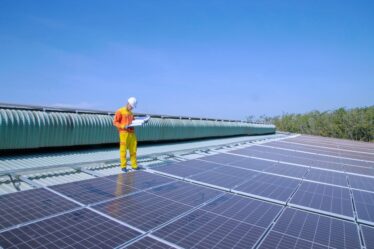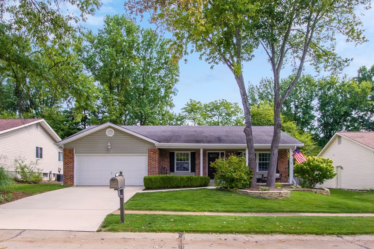
An outdoor kitchen is an open-air cooking area that incorporates many of the indoor amenities – things like a grill, sink, refrigerator, counters, storage, and seating. It allows you to enjoy dining al fresco without sacrificing any of the functionality of an indoor kitchen.
Outdoor kitchens can range from simple grilling stations to elaborate, fully-equipped cooking spaces. They are growing in popularity as people look to extend their living areas to the outdoors and take advantage of the nice weather.
With some thoughtful planning and design, you can create a beautiful and highly functional outdoor cooking space.
Install High-Quality Appliances
The workhorse appliances are what make an outdoor kitchen fully functional. Investing in high-end equipment designed specifically for outdoor use is a must.
For grilling, look for stainless or powder-coated gas grills that offer ample BTUs for searing at high heat. Commercial-grade models are ideal. Choose a size and burner configuration to support your typical cooking load. Side burners, griddles, and warming drawers are worthwhile additions.
Smokers are also great for your outdoor kitchen; it is a great way to add diverse flavors and a unique taste to your dishes. They are also useful for slow-cooking meats or other dishes. These are some reasons to purchase a smoker for your outdoor kitchen that might convince you.
Beyond grills and smokers, you can also consider:
- Outdoor refrigerators for chilling beverages and perishables.
- Pizza ovens that can reach 500+ degrees.
- Beverage centers for cold drinks.
- Ice makers to keep cocktails cold.
- Warming drawers for keeping food at serving temp.
Choose a Convenient Location
Deciding on the right location is one of the most important considerations when planning an outdoor kitchen. You’ll want to select a spot that allows for both convenience and functionality.
The ideal location will be easily accessible from your home’s main indoor cooking space and entertainment areas. Situate the outdoor kitchen near high-traffic zones, like a patio or deck, so it can be readily used for outdoor dining and parties. However, also ensure the space allows for adequate workflow – there should be enough room for multiple people to cook and maneuver around islands and appliances simultaneously.
Consider available utilities when choosing the site. There should be accessible electrical and gas connections nearby to hook up essential appliances like grills, refrigerators, lights, etc.
And don’t overlook the importance of good lighting, it can make all the difference when you’re cooking outdoors. The last thing you want is to fumble around in the dark and mix up the sugar with the salt, especially when you’re preparing a meal for family or friends.
For a combination of style and functionality, explore the Outdoor Lighting Store range of decking lights. They can be perfect for illuminating your cooking area, enhancing safety, and creating a cozy vibe for evening gatherings.
Incorporate Multi-Functional Islands
Islands are a quintessential part of any outdoor kitchen design. They provide ample surface area for food preparation while also allowing for storage, serving, and casual dining.
Opt for an L-shaped or U-shaped island configuration to maximize usable space. A minimum of 4 feet in width is recommended, but expanding this to 6-8 feet makes the island even more functional.
Seating at the island expands its usage for casual outdoor dining. Barstools lined along the counter create a comfortable eat-in space. Islands can also double as a bar for entertaining.
Provide Adequate Countertop Space
Having ample countertop workspace is critical in an outdoor kitchen. The countertops provide the necessary room for food preparation, setting down hot cookware, and serving dishes.
Select nonporous, sturdy materials that can withstand weather and heavy use. Top choices include:
- Granite
Beautiful natural stone that resists stains, heat, and scratches. Requires annual sealing.
- Marble
Elegant veined stone but more prone to etching from acids. Needs frequent sealing.
- Stainless steel
Durable, heat-resistant, and easy to sanitize. But it can dent with heavy impact.
- Tile
Impervious to weather, but grout lines can stain. Needs resealing over time.
- Concrete
Heat and stain-resistant once properly sealed.
Allow at least 15-20 square feet of countertop space between appliances. More room is better for avoiding crowded prep areas. Keep countertops at the standard 36 inches high for comfortable use when chopping, mixing, and cooking.
Incorporate a food prep sink directly into the countertop. Choose a size that can accommodate large pots and pans. Durable materials like stainless steel or enameled cast iron work best.
Include Plenty of Storage
While appliances and counters get most of the attention, storage is a make-or-break component for any kitchen’s functionality. Outdoor kitchens need ample dedicated storage to prevent them from becoming cluttered messes.
There are several storage solutions suitable for outdoor use:
- Cabinets
Enclosed cabinets keep items protected from weather and pests. Opt for stainless steel or high-grade polymer materials that won’t corrode. Include locks to secure valuables.
- Shelving
Open shelving provides easy access to frequently used items like spices. Use marine-grade wood, stainless steel, or plastic shelves.
- Drawers
Deep drawers hold bulkier items like grill tools and oven mitts. Look for full-extension drawer slides and stainless fronts.
- Refrigerator/freezers
Specialty models made for outdoor use keep cold foods safely chilled. Hardwood or stainless models withstand elements best.
- Dedicated tank storage
Propane tanks should be stored upright in well-ventilated cabinets designed specifically for that purpose.
Proper outdoor kitchen storage means everything has a designated place.
Provide Proper Ventilation
Ventilation is a major consideration for any outdoor cooking area. Proper ventilation removes smoke, grease, odors, and excess heat from the space.
Strategically place the outdoor kitchen away from walls, fences, or landscaping that could block airflow. Allow for open-air movement on all sides.
Installing a high-quality vent hood over the grill is critical. Hoods come in island or wall-mount styles. Look for commercial-grade stainless steel construction. For optimal airflow, choose a model with a fan that provides 600+ CFM.
Added ventilation tips:
- Supplement the hood with high-velocity fans to improve airflow.
- Incorporate louvered vents into cabinetry kicks.
- Allow space between countertops and backsplashes.
Conclusion
Creating a high-functioning outdoor kitchen requires careful planning, quality materials, and the right amenities. Focus on practical elements like storage, lighting, and durable surfaces while also letting your personal style shine through. A well-designed outdoor cooking space lets you take full advantage of warm weather and gives you an inviting spot to gather with family and friends. With these tips in mind, you can craft an outdoor kitchen that looks amazing and where you will have fun cooking.



